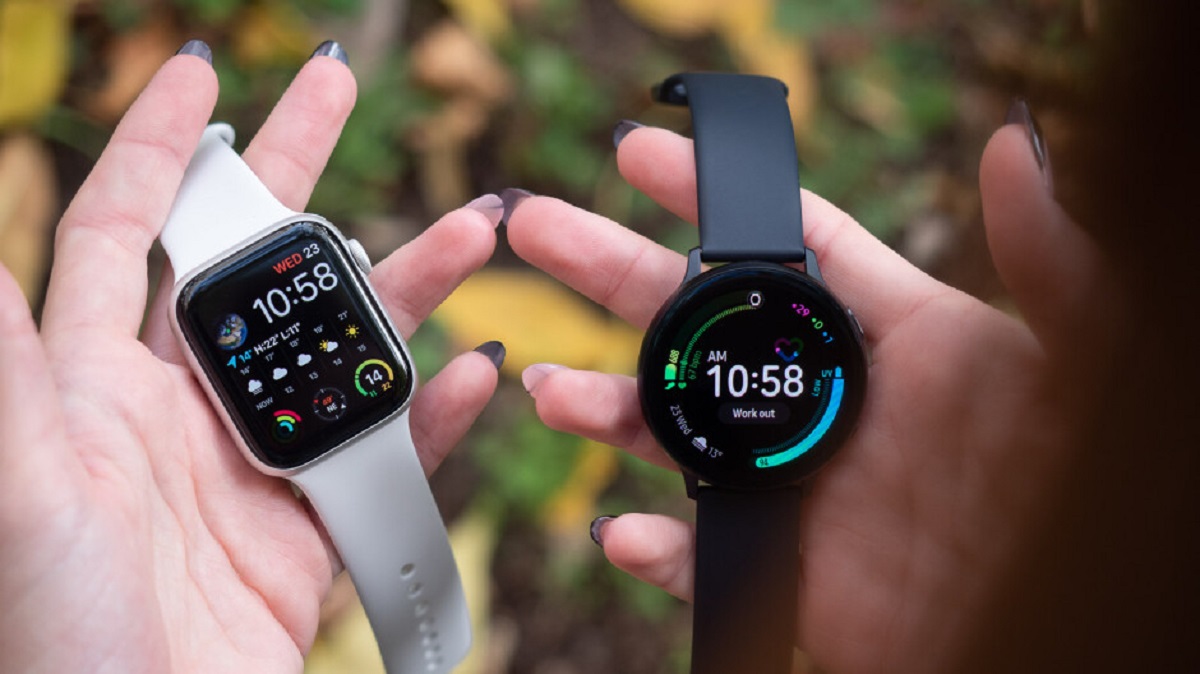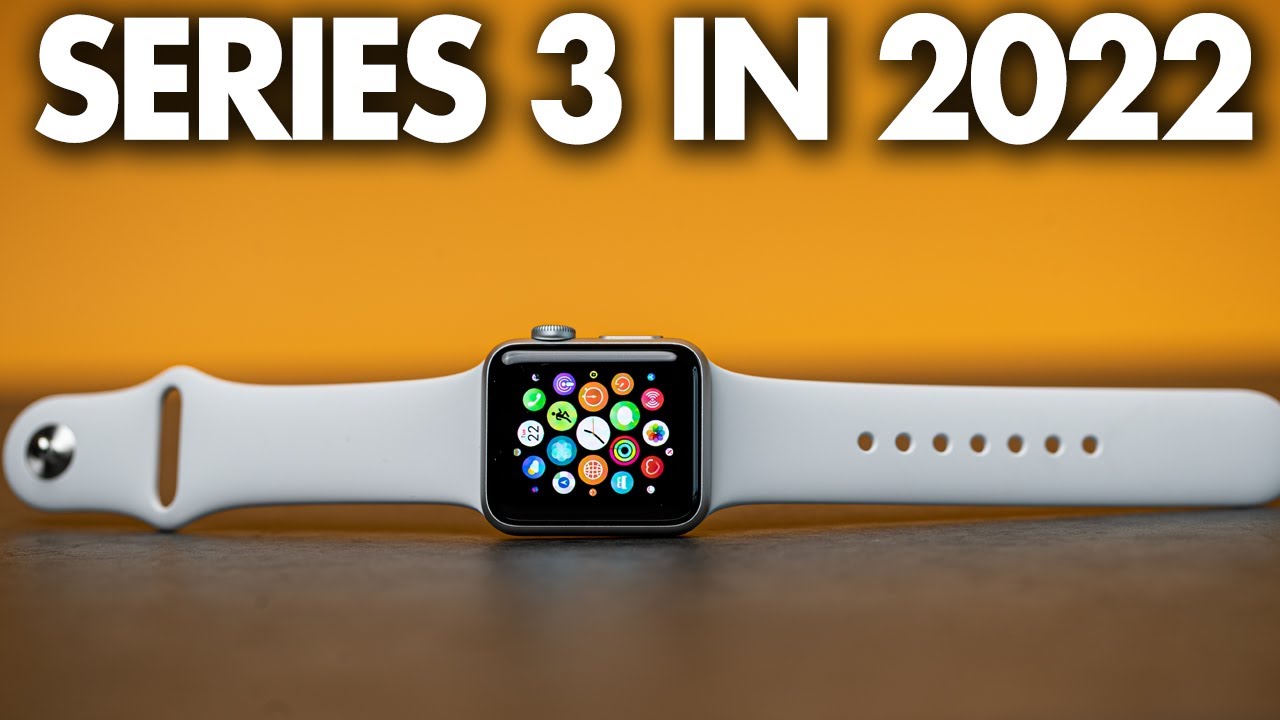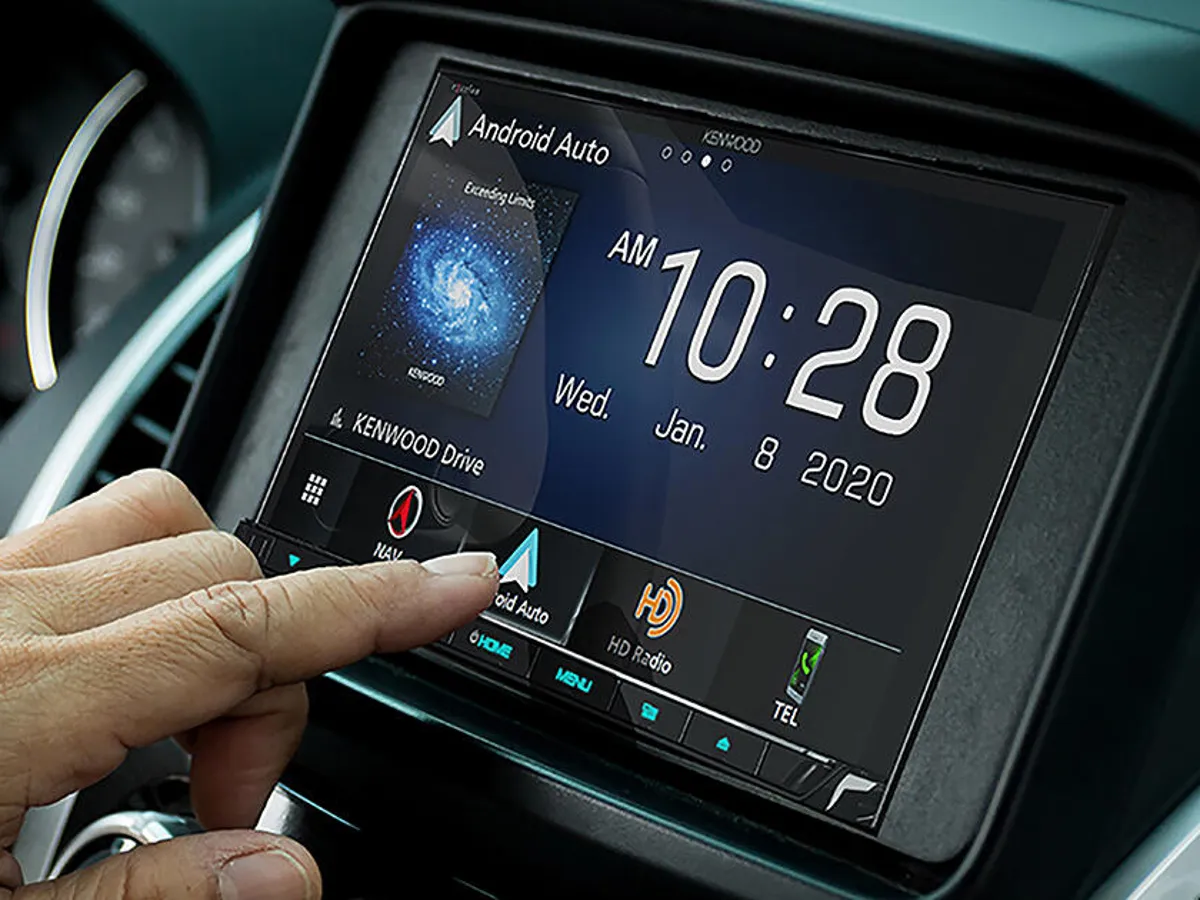Introduction
The Apple Watch has become a popular accessory for tech enthusiasts and fitness enthusiasts alike. With its sleek design and advanced features, it’s no wonder why people are drawn to this wearable device.
One of the key features that sets the Apple Watch apart from its competitors is its built-in GPS functionality. But what exactly does Apple Watch GPS mean? In this article, we will explore the ins and outs of GPS technology and how it enhances the capabilities of the Apple Watch.
GPS, which stands for Global Positioning System, is a satellite-based navigation system that allows users to determine their precise location anywhere on Earth. Originally developed by the United States Department of Defense, GPS has become an integral part of our daily lives, enabling us to navigate unfamiliar places, track fitness activities, and more.
The Apple Watch utilizes GPS technology to provide accurate location data without the need for a smartphone connection. This means that even if you leave your iPhone at home, you can still track your outdoor workouts, navigate through unfamiliar terrain, and receive location-based notifications right from your wrist.
One of the major benefits of the Apple Watch GPS is its ability to accurately track your outdoor workouts. Whether you’re running, cycling, hiking, or engaging in any other activity, the GPS data ensures that your distance, speed, and route are accurately captured. This allows you to measure your progress, set new goals, and analyze your performance over time.
Besides fitness tracking, the Apple Watch GPS also enhances safety and convenience. With GPS, you can share your location with friends and family, enabling them to keep track of your whereabouts in real-time. This can be particularly useful during outdoor adventures or when meeting up with friends in a crowded area.
Another advantage of the Apple Watch GPS is its integration with mapping services. You can get turn-by-turn directions, explore nearby points of interest, and even hail a ride using apps like Apple Maps or third-party navigation apps. This eliminates the need to constantly refer to your phone while on the go, making your outdoor activities more streamlined and enjoyable.
It’s important to note that the Apple Watch GPS depends on the strength of the satellite signals and may experience limitations in certain environments. Tall buildings, dense forests, and underground locations can interfere with GPS accuracy. However, the Apple Watch also has a feature called GLONASS, which utilizes Russian satellites to improve location accuracy in challenging environments.
Overall, the Apple Watch GPS is a valuable feature that enhances the functionality and convenience of the device. From accurate fitness tracking to improved safety and navigation, GPS technology provides users with a seamless and reliable experience. So whether you’re a fitness enthusiast, outdoor adventurer, or simply looking for a smarter way to navigate through everyday life, the Apple Watch GPS is a game-changer.
What is GPS?
GPS, or Global Positioning System, is a satellite-based navigation system that provides location and time information anywhere on Earth. It consists of a network of satellites orbiting the Earth, ground-based control stations, and GPS-enabled devices like smartphones, car navigation systems, and of course, the Apple Watch.
The GPS system works by using a process called trilateration. The satellites in orbit transmit signals that are received by GPS devices on the ground. By measuring the time it takes for the signals to travel from the satellites to the device, the GPS receiver can calculate the distance between each satellite and the user’s location.
In order to determine an accurate position, the GPS receiver needs to receive signals from at least four satellites. Using the distances calculated from these satellites, along with the precise timing information, the receiver can calculate its latitude, longitude, and altitude.
The accuracy of GPS depends on several factors, including the number and positioning of satellites in view, the quality of the receiver, and any interference from buildings, trees, or other obstacles. Generally, GPS can provide location information within a few meters, but under ideal conditions, it can be accurate to within a few centimeters.
Originally developed by the United States Department of Defense for military use, GPS has since been made available for civilian applications. In fact, GPS has become ingrained in our daily lives, with countless devices and services relying on it. From navigation systems in cars and airplanes to fitness trackers and smartphones, GPS has revolutionized the way we navigate and track our movements.
GPS technology has evolved over the years, with enhancements like GLONASS (Global Navigation Satellite System), a Russian equivalent, and Galileo, a European Union initiative. These additional satellite systems improve the accuracy, availability, and reliability of GPS receivers, especially in challenging environments such as urban canyons or dense forests.
Overall, GPS is a remarkable technology that has transformed our ability to navigate the world. By leveraging a network of satellites and sophisticated algorithms, GPS provides us with precise location information, enabling a wide range of applications and services. And with the integration of GPS technology in devices like the Apple Watch, we can enjoy the benefits of location tracking, navigation, and more, all from the convenience of our wrists.
How Does GPS Work?
GPS, which stands for Global Positioning System, is a complex technology that relies on a network of satellites, ground-based control stations, and GPS receivers to determine accurate positioning information. Here’s a simplified breakdown of how GPS works:
1. Satellite Network: The GPS system consists of a constellation of satellites orbiting the Earth. Currently, there are around 30 operational GPS satellites in medium Earth orbit, evenly distributed across six different orbital planes.
2. Signal Transmission: Each GPS satellite continuously broadcasts signals that contain information about its precise location and time. These signals travel at the speed of light and are received by GPS receivers on the ground.
3. Trilateration: To determine its own position, a GPS receiver needs to receive signals from at least four satellites simultaneously. By analyzing the timing of the signals, the receiver measures the distance between each satellite and itself using the speed of light as a reference.
4. Calculation of Position: Using the distances calculated from the four satellites and the known positions of those satellites, the GPS receiver can determine its own latitude, longitude, and altitude. This information is then used to display the user’s location on a map or provide other relevant data.
5. Data Processing: GPS receivers also utilize complex algorithms to filter and process the signals received from the satellites. These algorithms account for factors such as signal delay due to atmospheric conditions and satellite clock errors, improving the accuracy of the calculated position.
In addition to the core GPS system, there are other global navigation satellite systems, such as GLONASS (Russia) and Galileo (European Union), which work in a similar manner but with their own set of satellites. Many modern GPS receivers are designed to work with multiple satellite systems, resulting in improved accuracy and availability.
It’s worth noting that GPS accuracy can be affected by various factors. Obstructions like tall buildings, mountains, and dense forests can interfere with the signals, leading to reduced accuracy or complete signal loss. However, advancements in technology, including smaller and more sensitive receivers, have significantly mitigated these issues.
Overall, GPS technology has revolutionized the way we navigate and track location. By leveraging a network of satellites and precise calculations, GPS enables us to pinpoint our position anywhere on Earth. With the integration of GPS in devices like the Apple Watch, we can enjoy accurate location tracking, navigation assistance, and a wide range of other useful applications.
The Role of GPS in Apple Watch
The Apple Watch is equipped with a built-in GPS (Global Positioning System) that plays a vital role in enhancing its functionality and capabilities. The integration of GPS technology in the Apple Watch enables a wide range of features and benefits that enhance user experience and provide more accurate and reliable data.
One of the primary roles of GPS in the Apple Watch is its ability to accurately track outdoor workouts and activities. With GPS, users can engage in activities such as running, cycling, hiking, or walking, and the Apple Watch will accurately track and record their distance, speed, and route. This data is invaluable for monitoring progress, setting goals, and analyzing performance over time.
The GPS in the Apple Watch also enables precise navigation capabilities. Users can access turn-by-turn directions and explore nearby points of interest, all directly from their wrist. This is particularly useful for outdoor adventures or when traveling to unfamiliar locations. The ability to rely on the Apple Watch for navigation eliminates the need to constantly refer to a smartphone or a separate GPS device.
Another important role of GPS in the Apple Watch is its ability to share real-time location information. Users can easily share their location with friends and family, giving them peace of mind and providing an added layer of safety during outdoor activities or when meeting up in crowded areas. This feature can be particularly useful when engaging in solo workouts or when exploring unfamiliar terrain.
Furthermore, the GPS in the Apple Watch allows for accurate elevation tracking. It can measure changes in altitude during activities like hiking or climbing, providing users with valuable information about their vertical ascent and descent. This is especially beneficial for trail runners, mountaineers, and outdoor enthusiasts who are seeking precise elevation data.
Additionally, the Apple Watch GPS enhances the accuracy and reliability of health and fitness tracking. It ensures that metrics like calories burned, active minutes, and heart rate are more precise by factoring in the user’s location and movement. This is particularly crucial for outdoor activities where terrain and varying speeds can impact the accuracy of these metrics.
It’s important to note that while the Apple Watch GPS is a valuable feature, it does require an initial setup and synchronization process. Users need to sync the Apple Watch with their iPhone and ensure a clear view of the sky to establish a GPS connection. Once the connection is established, the Apple Watch can function independently from the iPhone when it comes to GPS tracking.
Overall, the GPS technology in the Apple Watch significantly enhances its functionality and provides users with a more robust and accurate experience. From accurate workout tracking and navigation to improved safety and elevation monitoring, the GPS in the Apple Watch makes it a valuable companion for outdoor activities and everyday life.
Benefits of Apple Watch GPS
The integration of GPS (Global Positioning System) technology in the Apple Watch brings numerous benefits to users, enhancing their overall experience and providing valuable features that support their active lifestyles. Here are some of the key benefits of Apple Watch GPS:
Accurate Outdoor Workout Tracking: The Apple Watch GPS allows users to accurately track their outdoor workouts, such as running, cycling, or hiking. With GPS, users can monitor their distance, speed, and route in real-time, providing valuable data to analyze performance, set goals, and track progress over time. This ensures a more engaging and effective workout experience.
Precise Navigation: The Apple Watch GPS enables users to access turn-by-turn directions and explore nearby points of interest directly from their wrist. Whether you’re exploring a new city or navigating a trail, having navigation capabilities on your wrist eliminates the need to constantly look at your phone or carry a separate GPS device, making your journey more convenient and enjoyable.
Safety and Location Sharing: With GPS, the Apple Watch allows users to share their real-time location with family and friends, providing an extra level of safety during outdoor activities or when meeting up in crowded areas. This feature gives loved ones peace of mind and can be particularly useful for solo workouts or when exploring unfamiliar terrains.
Elevation Tracking: The Apple Watch GPS accurately measures changes in altitude, enabling users to track their vertical ascent and descent during activities like hiking, climbing, or skiing. This elevation data provides valuable insights into the intensity and difficulty of workouts, allowing users to set more specific and challenging goals.
Improved Health and Fitness Tracking: The GPS in the Apple Watch enhances the accuracy of health and fitness tracking by factoring in the user’s location and movement. This ensures that metrics like calories burned, active minutes, and heart rate are more precise, especially during outdoor activities where terrain and varying speeds can affect accuracy. With more accurate data, users can better monitor their progress and make informed decisions about their health and fitness goals.
Independence from iPhone: The Apple Watch GPS allows for independent usage, meaning users can leave their iPhones at home and still utilize the GPS functionality. This offers added convenience and freedom for outdoor activities, as users can track their workouts, navigate, and share their location directly from their Apple Watch without relying on their iPhone.
Enhanced Battery Life: While utilizing GPS functionality does consume additional battery power, the Apple Watch is designed to optimize battery life, even during outdoor workouts. Users can expect a reasonable battery life while utilizing GPS tracking, allowing them to enjoy their activities without worrying about running out of power.
These are just a few of the many benefits that the Apple Watch GPS brings to users. Its accurate tracking capabilities, navigation features, safety enhancements, elevation tracking, improved health monitoring, independent usage, and optimized battery life make it an indispensable tool for those who lead active lives and seek to maximize their outdoor experiences.
Accuracy of Apple Watch GPS
The accuracy of the Apple Watch GPS is a crucial aspect to consider when using the device for outdoor activities and navigation. While the GPS technology in the Apple Watch is generally reliable, there are factors that can impact its accuracy and should be taken into account.
The Apple Watch GPS relies on a network of satellites orbiting the Earth to determine its precise location. The more satellites it can connect to, the more accurate the GPS data will be. However, obstructions such as tall buildings, dense forests, or deep canyons can interfere with satellite signals and lead to reduced accuracy or even signal loss.
In addition to physical obstructions, environmental conditions can also affect GPS accuracy. Factors such as heavy cloud cover, interference from other electronic devices, or being indoors can impact the Apple Watch’s ability to receive and process satellite signals. In such cases, the GPS accuracy may be less reliable.
Apple has taken steps to enhance the GPS accuracy of the Apple Watch by integrating Glonass (Global Navigation Satellite System), a Russian equivalent to GPS. Glonass provides additional satellites that the Apple Watch can connect to, resulting in improved accuracy, especially in challenging environments where GPS signals may be obstructed.
It’s important to note that the accuracy of the Apple Watch GPS can vary depending on the specific model. Newer generations of the Apple Watch typically have more advanced GPS technology and improved accuracy compared to older models. Therefore, if GPS accuracy is a critical factor for your needs, it is advisable to consider purchasing a newer model with the latest GPS technology.
Another factor that can affect GPS accuracy is the quality of the GPS receiver itself. Apple uses high-quality GPS receivers in the Apple Watch, but the accuracy can still be influenced by factors such as the signal processing algorithms used and the overall design of the device. In general, the Apple Watch has proven to deliver reliable and accurate GPS tracking for most outdoor activities.
It’s worth keeping in mind that while the Apple Watch GPS strives for accuracy, it may not always provide precise measurements comparable to professional-grade GPS systems. However, for the vast majority of users, the accuracy of the Apple Watch GPS is more than sufficient for tracking workouts, navigation, and other outdoor activities.
To mitigate any potential accuracy issues, it is recommended to ensure a clear view of the sky when using the Apple Watch GPS. This allows for a stronger and more consistent connection with satellite signals. Additionally, updating the Apple Watch to the latest firmware and keeping the GPS software up to date can help improve accuracy as Apple continues to release performance and stability improvements.
Overall, while GPS accuracy can be influenced by various factors, the Apple Watch GPS provides a reliable and accurate tracking experience for most users. By considering environmental conditions, hardware advancements, and best practices, users can maximize the accuracy of their Apple Watch GPS and leverage its capabilities for accurate navigation, outdoor workout tracking, and other location-based activities.
Battery Life of Apple Watch GPS
The battery life of the Apple Watch GPS is a key consideration for users who rely on the device for outdoor activities and navigation. While utilizing GPS functionality does consume additional power, Apple has made significant strides in optimizing battery performance to ensure that users can enjoy the benefits of GPS without sacrificing usability.
When using the Apple Watch GPS continuously during outdoor workouts or for extended periods of navigation, it is expected that the battery will drain faster compared to normal usage. The GPS feature requires constant communication with the satellite system, which increases power consumption. However, the Apple Watch is designed to strike a balance between functionality and battery life.
The exact battery life of the Apple Watch GPS can vary depending on factors such as the model, usage patterns, screen brightness, and other settings. Generally, newer generations of the Apple Watch offer improved battery performance compared to older models. This is due to advancements in hardware and more efficient software optimization.
Apple provides an estimated battery life range for the Apple Watch, taking into account typical usage scenarios without specifying the use of GPS. However, it’s important to note that using the GPS feature for prolonged periods may result in a shorter battery life than what is specified by Apple. Factors such as screen-on time, app usage, and active display features (e.g., always-on display) can further impact battery consumption when using GPS.
To conserve battery life while using the Apple Watch GPS, you can make use of certain strategies:
- Limit unnecessary app usage and background activities when GPS is engaged.
- Reduce screen brightness or enable the “auto-brightness” feature to optimize power consumption.
- Disable unnecessary notifications or adjust their settings to prevent excessive screen wake-ups.
- Consider using external power sources, such as portable chargers or battery cases, if extended GPS usage is anticipated.
It’s worth noting that Apple continually works to improve battery performance through software updates. These updates may include optimizations and enhancements specifically targeted towards GPS functionality. Thus, it is recommended to keep the Apple Watch’s software up to date to take advantage of any battery life improvements.
In general, the Apple Watch GPS offers reasonable battery life for most users’ outdoor activities. With normal usage patterns, including intermittent GPS usage, users can expect their Apple Watch to last a full day on a single charge. However, demanding activities that heavily rely on GPS tracking, such as long hikes or biking trips, may require additional charging throughout the day to maintain a consistent power supply.
Ultimately, monitoring battery usage and adopting power-saving techniques can help users strike a balance between utilizing the Apple Watch GPS and ensuring sufficient battery life for their needs. By planning accordingly and being mindful of power consumption, users can enjoy the benefits of GPS functionality without significant impact on the overall usability of the Apple Watch.
Conclusion
The integration of GPS technology in the Apple Watch has transformed the device into a powerful tool for outdoor activities, fitness tracking, and navigation. With its accurate location tracking, turn-by-turn directions, and real-time sharing capabilities, the Apple Watch GPS offers significant benefits to users.
From tracking outdoor workouts and monitoring progress to exploring new locations and staying connected with loved ones, the Apple Watch GPS enhances the overall user experience. With reliable GPS functionality, users can confidently engage in various activities, such as running, cycling, hiking, or simply exploring their surroundings.
While the accuracy of GPS can be influenced by factors such as obstructions and environmental conditions, the Apple Watch GPS strives to provide accurate and reliable data for most outdoor activities. Integrating GLONASS and incorporating advancements in hardware and software optimization, Apple has made significant improvements to ensure a more accurate GPS experience.
The battery life of the Apple Watch GPS is another important consideration. While prolonged GPS usage can impact battery performance, the Apple Watch is designed to maximize battery efficiency. By adapting power-saving strategies and keeping the device updated with the latest software, users can optimize battery life while enjoying the benefits of GPS functionality.
In conclusion, the Apple Watch GPS adds immense value to the device, enhancing its capabilities and providing users with accurate location tracking, navigation assistance, and safety features. Whether you’re a fitness enthusiast, outdoor adventurer, or a tech-savvy individual, the Apple Watch GPS is a valuable companion that elevates your overall experience and enables you to make the most out of your outdoor activities.

























